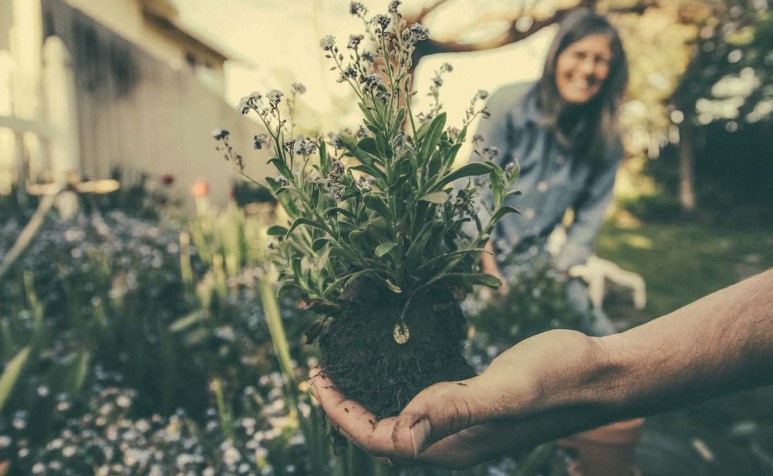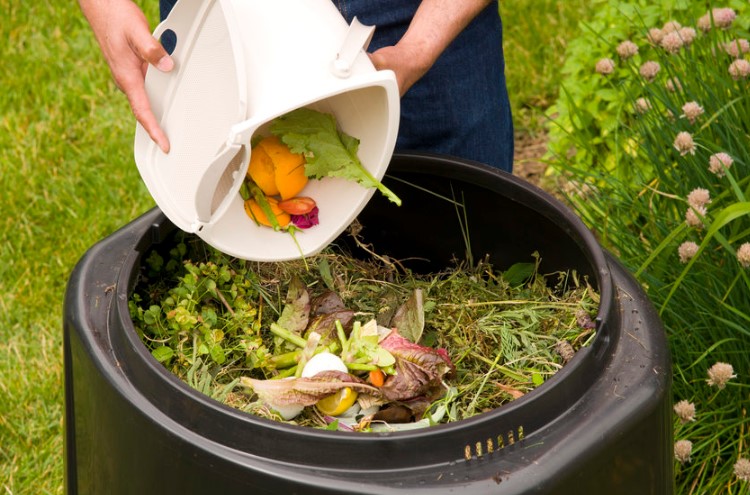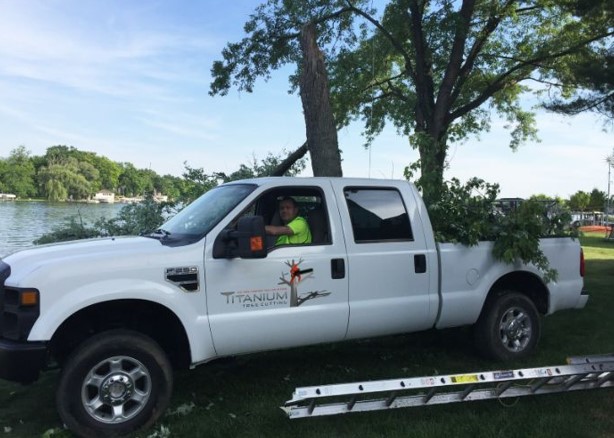Home Gardening: Cultivating Your Green Space

Introduction
Definition of Home Gardening
Home gardening refers to the practice of growing plants, including vegetables, herbs, flowers, and fruits, in and around one’s home. It can take place in a backyard, on a balcony, or even indoors.
Importance and Benefits of Home Gardening
Home gardening offers numerous benefits, including the provision of fresh produce, physical exercise, mental relaxation, and a connection to nature. It can also enhance the aesthetic appeal of a home and promote environmental sustainability.
Historical Context of Home Gardening
Historically, home gardening has been a crucial part of human life. From the victory gardens of World War II to the rise of urban gardening in the 21st century, home gardening has evolved to meet the changing needs and lifestyles of people.
Types and Categories of Home Gardens
Vegetable Gardens
Vegetable gardens are one of the most popular types of home gardens. They provide fresh, nutritious produce and can be tailored to fit various spaces and climates.
Herb Gardens
Herb gardens are ideal for those who enjoy cooking with fresh herbs. They are typically easy to maintain and can be grown in small spaces, including windowsills and balconies.
Flower Gardens
Flower gardens add color and beauty to any home. They can range from simple window boxes to elaborate landscapes filled with a variety of flowering plants.
Container Gardens
Container gardens are perfect for those with limited space. They allow for the growing of plants in pots or other containers, making them suitable for balconies, patios, and small yards.
Raised Bed Gardens
Raised bed gardens involve growing plants in soil that is elevated above ground level. This method offers better control over soil quality and drainage.
Indoor Gardens
Indoor gardens allow for year-round gardening. They can include a variety of plants, such as herbs, vegetables, and decorative flowers, grown under controlled indoor conditions.
Community Gardens
Community gardens are shared spaces where individuals or families can cultivate their own garden plots. They foster community spirit and provide access to gardening for those without suitable space at home.
Planning Your Home Garden
Assessing Space and Light
Evaluating the available space and sunlight is crucial for a successful home garden. Different plants have varying requirements for light and space, influencing what and where you can plant.
Choosing the Right Plants
Selecting plants that are suitable for your climate, soil, and light conditions will ensure a thriving garden. Consider the growth habits and care requirements of each plant.
Seasonal Considerations
Understanding the growing seasons of different plants will help in planning your planting and harvesting schedules. This ensures that your garden produces continuously throughout the year.
Designing Your Garden Layout
A well-planned garden layout maximizes space and efficiency. Consider factors like plant height, spread, and companion planting to create a harmonious and productive garden.
Soil and Fertilizers
Understanding Soil Types
Soil types can vary widely, from sandy to clayey, each with its own set of characteristics. Knowing your soil type helps in selecting appropriate plants and amendments.
Soil Preparation Techniques
Proper soil preparation involves adding organic matter, aerating the soil, and ensuring good drainage. This creates an ideal environment for plant roots to grow.
Organic vs. Inorganic Fertilizers
Organic fertilizers, such as compost and manure, improve soil health over time, while inorganic fertilizers provide immediate nutrients. Both have their benefits and can be used depending on the garden’s needs.
Composting for Home Gardens
Composting is an excellent way to recycle organic waste and enrich garden soil. It involves decomposing kitchen scraps and garden waste into a nutrient-rich amendment.
Watering and Irrigation
Best Practices for Watering
Proper watering techniques are essential for plant health. Factors like soil type, weather, and plant species influence how often and how much to water.
Types of Irrigation Systems
Irrigation systems range from simple watering cans to automated drip systems. Choosing the right system depends on the size of your garden and the plants you grow.
Water Conservation Tips
Conserving water in the garden not only saves resources but also reduces costs. Techniques like mulching and using rain barrels can significantly lower water usage.
Dealing with Overwatering and Underwatering
Both overwatering and underwatering can harm plants. Understanding the signs of each and adjusting your watering practices accordingly ensures healthy plant growth.
Pest and Disease Management
Common Garden Pests
Aphids, slugs, and caterpillars are among the common pests that can damage garden plants. Identifying and managing these pests is crucial for maintaining plant health.
Natural Pest Control Methods
Natural pest control methods, such as introducing beneficial insects and using organic sprays, can effectively manage pests without harming the environment.
Recognizing and Treating Plant Diseases
Diseases like blight, mildew, and root rot can affect garden plants. Early identification and appropriate treatment can prevent widespread damage.
Integrated Pest Management (IPM)
IPM is a holistic approach to pest management that combines biological, cultural, physical, and chemical tools to minimize pest damage sustainably.
Tools and Equipment
Essential Gardening Tools
Basic gardening tools, such as trowels, pruners, and watering cans, are essential for maintaining a garden. Investing in quality tools can make gardening tasks easier.
Choosing the Right Equipment
Selecting the right equipment, from garden forks to wheelbarrows, depends on the specific needs of your garden. Consider durability and ease of use when making purchases.
Maintenance of Gardening Tools
Regular maintenance of gardening tools, including cleaning and sharpening, extends their lifespan and ensures they perform effectively.
Innovative Gardening Gadgets
Modern gardening gadgets, such as smart irrigation systems and soil sensors, can help optimize garden care and improve efficiency.
Planting Techniques
Seed Starting
Starting plants from seeds allows for a greater variety of plants and can be more cost-effective than buying seedlings. It requires careful attention to light, temperature, and moisture.
Transplanting Seedlings
Transplanting seedlings involves moving young plants from their starting containers to the garden. Proper technique ensures minimal stress and promotes healthy growth.
Direct Sowing Methods
Direct sowing involves planting seeds directly into the garden soil. It is suitable for many vegetables and flowers and simplifies the planting process.
Companion Planting
Companion planting involves growing certain plants together to enhance growth, deter pests, and improve yields. Understanding beneficial plant relationships is key.
Garden Maintenance
Pruning and Trimming
Regular pruning and trimming help maintain plant shape, remove dead or diseased parts, and encourage new growth. Different plants have specific pruning requirements.
Weed Control Strategies
Weeds compete with garden plants for resources. Effective weed control methods, such as mulching and hand weeding, keep them in check.
Mulching Techniques
Mulching helps retain soil moisture, suppress weeds, and improve soil health. Organic mulches, like straw and wood chips, are particularly beneficial.
Seasonal Maintenance Checklist
A seasonal maintenance checklist helps ensure all necessary tasks are performed, from planting and fertilizing to pruning and protecting plants from frost.
Harvesting and Storage
When and How to Harvest
Knowing the right time to harvest each plant ensures peak flavor and nutrition. Proper harvesting techniques prevent damage to plants and produce.
Proper Storage Techniques
Proper storage of harvested produce extends its shelf life. Techniques vary for different types of fruits, vegetables, and herbs.
Preserving Your Produce
Preserving methods, such as canning, freezing, and drying, allow you to enjoy your garden’s bounty year-round.
Utilizing Your Harvest in Recipes
Incorporating home-grown produce into recipes adds freshness and flavor. Many recipes can highlight the unique taste of garden-fresh ingredients.
Indoor Gardening
Benefits of Indoor Gardening
Indoor gardening offers the advantage of year-round cultivation and the ability to grow plants in controlled environments, regardless of outdoor conditions.
Best Plants for Indoor Gardens
Certain plants thrive indoors, including herbs like basil and mint, vegetables like tomatoes and peppers, and decorative plants like ferns and succulents.
Indoor Gardening Techniques
Techniques for successful indoor gardening include using grow lights, maintaining proper humidity levels, and choosing suitable containers.
Indoor Plant Care Tips
Caring for indoor plants involves regular watering, fertilizing, and ensuring adequate light. Monitoring for pests and diseases is also important.
Community Gardening
Benefits of Community Gardens
Community gardens provide a space for people to grow their own food, learn gardening skills, and build community connections.
Starting a Community Garden
Starting a community garden involves finding a suitable location, organizing participants, and planning the garden layout and management.
Managing Community Gardens
Effective management of community gardens includes establishing rules, coordinating tasks, and ensuring fair distribution of resources.
Success Stories of Community Gardens
Many community gardens have transformed neighborhoods, providing fresh produce and fostering a sense of community. Sharing these success stories can inspire others.
Sustainability in Home Gardening
Sustainable Gardening Practices
Sustainable gardening practices include composting, using organic fertilizers, and selecting native plants. These practices promote environmental health and biodiversity.
Water-Saving Techniques
Water-saving techniques, such as drip irrigation and mulching, reduce water usage and help conserve this valuable resource.
Recycling and Upcycling in the Garden
Recycling and upcycling materials, like using old containers for planters or creating compost bins from recycled materials, reduce waste and save money.
Creating a Wildlife-Friendly Garden
A wildlife-friendly garden provides habitat for beneficial insects, birds, and other wildlife. Planting native species and avoiding chemicals support local ecosystems.
Personal Stories and Case Studies
Successful Home Gardening Experiences
Sharing personal stories of successful home gardening can inspire and provide practical tips for others. These stories highlight the joys and challenges of gardening.
Challenges and Solutions from Home Gardeners
Discussing common challenges faced by home gardeners and the solutions they found can help others avoid similar issues and succeed in their gardening endeavors.
Inspiring Garden Transformations
Inspiring stories of garden transformations, from neglected spaces to thriving green oases, demonstrate the potential of home gardening.
Interviews with Expert Gardeners
Interviews with expert gardeners provide valuable insights and advice, sharing their knowledge and experience with a broader audience.
Expert Insights
Advice from Horticulturists
Horticulturists can offer expert advice on plant care, pest management, and garden design, helping gardeners achieve better results.
Tips from Experienced Gardeners
Experienced gardeners share their tried-and-true tips for successful gardening, from planting techniques to garden maintenance.
Scientific Insights into Gardening Practices
Scientific research on gardening practices can provide a deeper understanding of plant growth, soil health, and pest management, enhancing gardening effectiveness.
Predictions for the Future of Home Gardening
Experts predict that home gardening will continue to grow in popularity, with advancements in technology and sustainable practices shaping its future.
Conclusion
Summary of Key Points
Home gardening offers numerous benefits, from fresh produce to environmental sustainability. With proper planning, care, and knowledge, anyone can create a thriving garden.
Encouragement to Start Home Gardening
Starting a home garden can be a rewarding and fulfilling experience. Whether you have a large yard or a small balcony, there are gardening options to suit every space.
Call to Action for Further Education
For those interested in learning more, numerous resources are available, from gardening books and websites to local gardening clubs and community gardens.
FAQs
Common Questions about Home Gardening
Addressing common questions, such as how to start a garden, what plants to choose, and how to deal with pests, can help new gardeners get started.
Troubleshooting Common Gardening Problems
Providing solutions to common gardening problems, like poor soil quality, pest infestations, and plant diseases, ensures gardeners can overcome challenges.
Resources for Further Learning
Recommending books, websites, and local organizations for further learning can help gardeners continue to grow their knowledge and skills.







